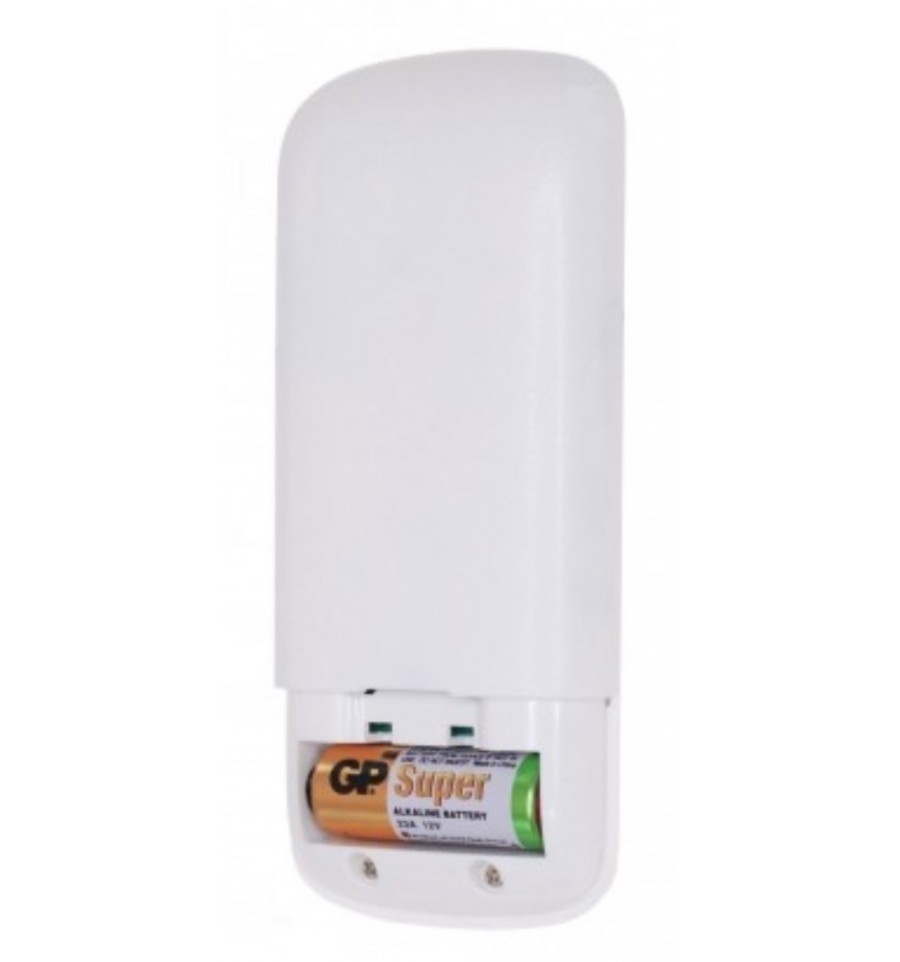
When MadeSafe was launched, Enseo thought it would be a good solution for both schools and hotels and hired sales teams focused on each. The basic technology is about four years old, Ogle said. “Anything we can do to shorten the time between an alert and when a first responder arrives on site, the better,” Enseo founder and CEO Vanessa Ogle said in an interview. In addition to providing detailed location information, they can also be tied into schools’ security camera systems, allowing those charged with responding to emergencies to see live video in an area where an alert has been triggered. Hardwired into a school’s existing internet infrastructure, the gateway devices communicate directly to law enforcement and other designated first responders. Those transmissions are communicated to MadeSafe “gateway” devices, which need to be installed throughout schools.

Officially dubbed Personal Location Devices, they contain wireless transmitters that provide precise location information after a red button is depressed for three seconds. “However, the devil is in the details of implementation when it comes to the plethora of gadgets, bells, and whistles on the market.” From Hotels to Schools?Įnseo’s personal panic buttons look like a key fob and can be attached to a lanyard worn around a teacher’s neck. “The ability for teachers and support staff to communicate in a timely manner in an emergency is critical,” said school-safety consultant Kenneth Trump. “Not just something you use when you’re in distress, but something that helps you feel safe.And many observers also warn against a rush to adopt unproven-and in some cases, untested-products, saying schools may be better served by following basic steps such as locking gates and enforcing existing ID policies. “We want it to be something that you use every day,” he says of the app. Ultimately, says Inganji, the app could fill a void that has plagued Kenya for years: a desperate need for security in almost all aspects of life. They also plan to make a “timer”, whereby a user can trigger a distress signal if they have not returned home by a set hour as well as a “walk with me” feature, which allows users to escort one another home virtually and ensure that each party has returned safely (it is cancellable at any time by either user). Inganji and his team plan to broaden the app beyond its “panic button” use, with a platform where users can share safety news of crimes occurring in their immediate area, in turn alerting police but also warning other Usalama users of dangers in the vicinity. Photograph: Brett Eloff/The Royal Academy of Engineering. The ‘panic button’ app was shortlisted for an engineering innovation prize. In this way, the user’s contacts can also ensure services are accountable, says Inganji.Įdwin Inganji, centre, at his office in Nairobi, with co-founders Marvin Makau, left, and Kenneth Gachukia, right. The app requires the user to input three personal contacts – such as a spouse, parent or work colleague – who are notified alongside the services of any emergency situation, and are given updates every five minutes until the situation is resolved.

“So it shows who is not being accountable, and should make the services act with more responsibility.” “It shows us where crime is happening but the services are failing to deploy,” says Inganji. Inganji’s app, which he developed with his classmates (who are co-founders), includes a database of all the crimes logged, which helps emergency services to know where most crimes are being committed, and as a result where best to position officers. Nairobi’s crime rate is twice the national average, and armed street crime, carjackings, home invasions and kidnapping occur at any time, anywhere. And since it was reconnected in 2013 – the year Inganji was mugged – the toll-free line has been overloaded with prank callers asking for recipe ideas and hotel bookings. The government’s 999 emergency number was disconnected in 1998 amid claims that the state lacked both the personnel and the facilities to deal with callers. If no one is around to help you, most of the time you’re screwed.” “Either you have to take yourself, or have a witness take you. “In Nairobi, in Kenya generally, reaching the emergency services when you need them is really difficult – the toll-free line just doesn’t go through,” says Inganji, 22.


 0 kommentar(er)
0 kommentar(er)
